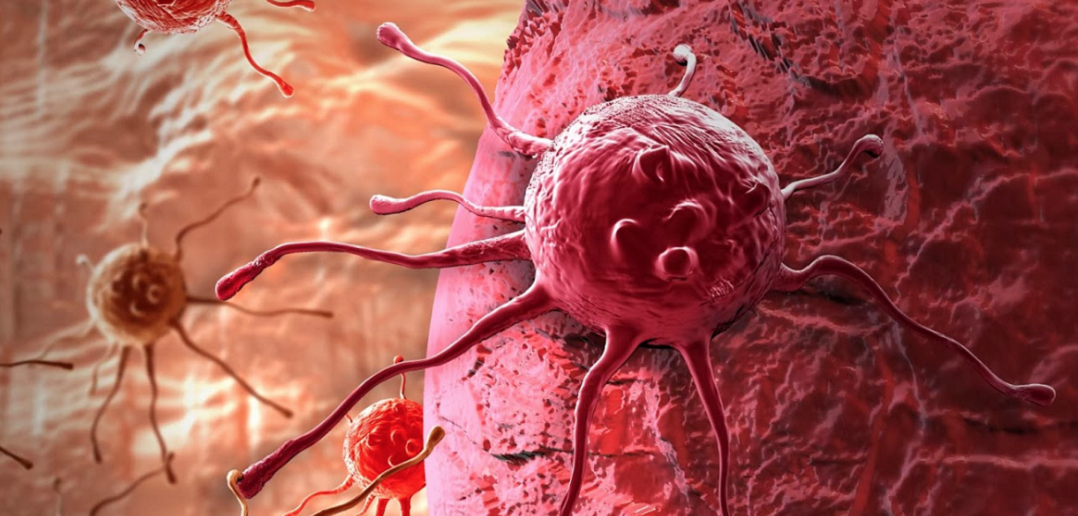Cancer Treatments: New Study Shows Dietary Fatty Acids Called Dihomogamma-Linolenic Acid or DGLA Can Be Used To Target And Kill Cancer Cells
Source: Cancer Treatments Jul 12, 2020 5 years, 5 months, 2 weeks, 3 days, 4 hours, 28 minutes ago
Cancer Treatments: Oncology researchers from Stanford University and Washington State University have demonstrated that a fatty acid called dihomogamma-linolenic acid, or DGLA, can be used to target and kill human cancer cells.

The research findings published in
the journal: Developmental Cell, found that DGLA can induce ferroptosis in an animal model and in actual human cancer cells.
https://www.sciencedirect.com/science/article/abs/pii/S1534580720304986?via%3Dihub
Dihomogamma-linolenic acid is derived from Gamma-linolenic acid (GLA). GLA is essential for maintaining brain function, skeletal health, reproductive health, and metabolism. It's also essential for stimulating skin and hair growth. Many individuals use gamma linolenic acid (GLA) for conditions such as arthritis, nerve damage due to diabetes, eczema, high blood pressure, and other conditions, but there is no good scientific evidence to support most of these uses.
GLA is obtained from vegetable oils such as evening primrose (Oenothera biennis) oil (EPO), blackcurrant seed oil, borage seed oil, and hemp seed oil. GLA is also found in varying amounts in edible hemp seeds, oats, barley, and spirulina.
Concerns have been raised about higher linoleic acid consumption being harmful for heart health because of potential pro-inflammatory and thrombogenic properties. Linoleic acid can be elongated to arachidonic acid and subsequently synthesized to a variety of pro-inflammatory eicosanoids, which may increase various medical conditions.
Typically, Ferroptosis is an iron-dependent type of cell death that was discovered in recent years and has become a focal point for disease research as it is closely related to many disease processes.
Dr Jennifer Watts, a Washington State University associate professor and corresponding author on the research, said this discovery has many implications, including a step toward a potential treatment for cancer.
Dr Watts told Thailand Medical News, “If you could deliver DGLA precisely to a cancer cell, it could promote ferroptosis and lead to tumor cell death. Also, just knowing that this fat promotes ferroptosis might also affect how we think about conditions such as kidney disease and neurodegeneration where we want to prevent this type of cell death."
Dihomogamma-linolenic acid or DGLA is a polyunsaturated fatty acid found in small amounts in the human body, though rarely in the human diet. Compared to other fatty acids, such as those found in fish oil, DGLA is relatively understudied.
Dr Watts has been researching dietary fats including DGLA for nearly twenty years, using the nematode Caenorhabditis elegans as an animal model. A microscopic worm, C. elegans is often used in molecular research because it is transparent and allows scientists to easily study cell-level activity in a whole animal over its relatively short lifespan. Results found in the C. elegans cells are also often transferable to human cells.
>
The researchers discovered that feeding nematodes a diet of DGLA-laden bacteria killed all the germ cells in the worms as well as the stem cells that make the germ cells. The way the cells died carried many signs of ferroptosis.
Dr Marcos Perez, a Washington State University doctoral student and first author on the paper added, "Many of the mechanisms we saw in the nematodes were consistent with the hallmarks of ferroptosis in mammalian systems, including the presence of redox-active iron and the inability to repair oxidized lipids, which are like molecular executioners."
In order to see if the results would translate to human cells, Dr Watts and Dr Perez collaborated with Dr Scott Dixon of Stanford University, who has been studying ferroptosis and its potential for battling cancer for many years.
Utilizing what they had learned from the nematode work, the researchers showed that DGLA could induce ferroptosis in human cancer cells. They also found an interaction with another fatty acid class, called an ether lipid, that had a protective effect against DGLA. When they took out the ether lipids, the cells died faster in the presence of DGLA.
Significantly, in addition to this new knowledge, the research also demonstrated that C. elegans can be a useful animal research model in the study of ferroptosis, a field that has had to rely mostly on cell cultures.
The research team recently received a US$1.4 million grant from the National Institutes of Health to investigate what makes the nematode germ cells so susceptible to DGLA and explore the role of mitochondria, the cell organelles involved in burning fat and regulating metabolism, in ferroptosis.
For more on emerging
Cancer Treatments, keep on logging to Thailand Medical News.
